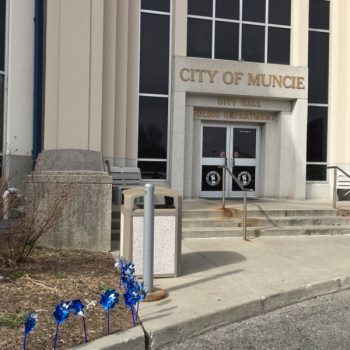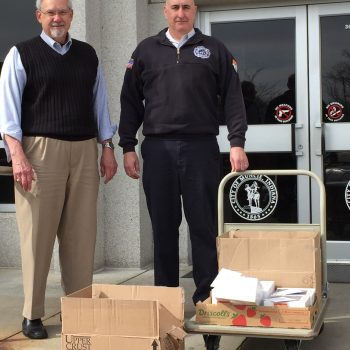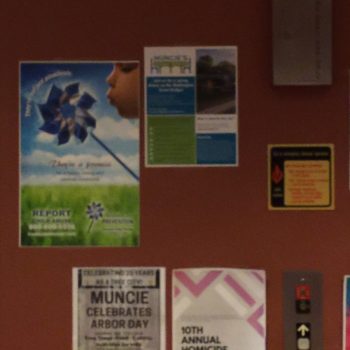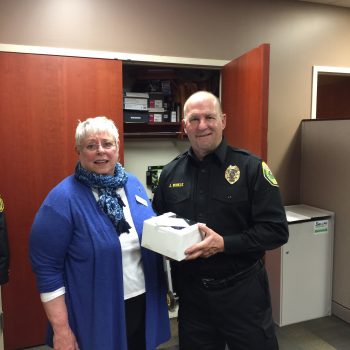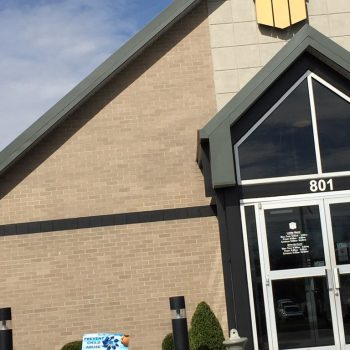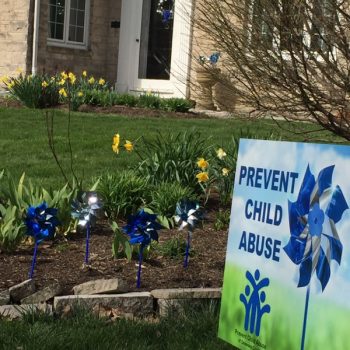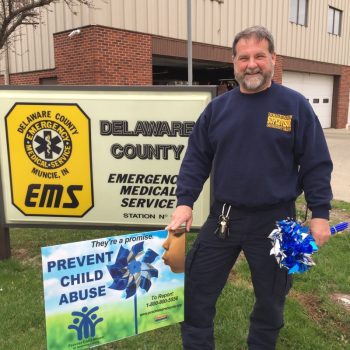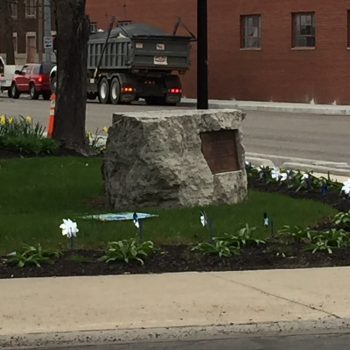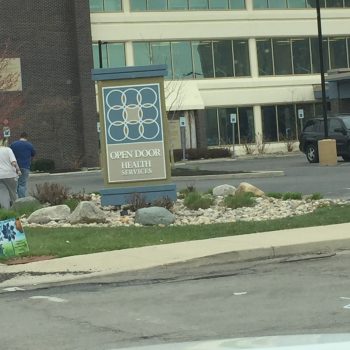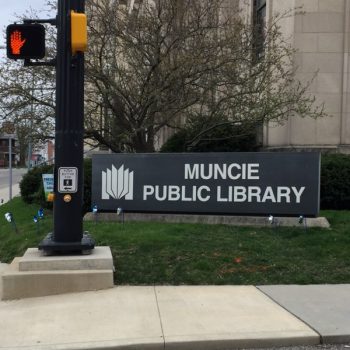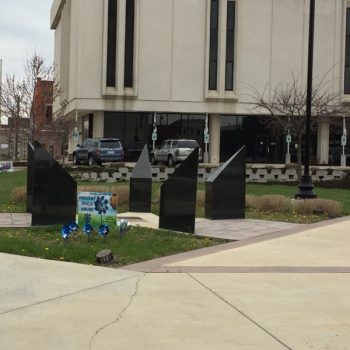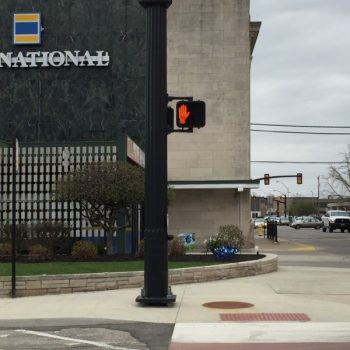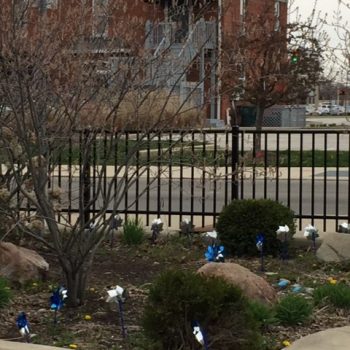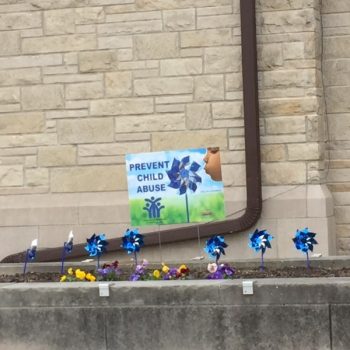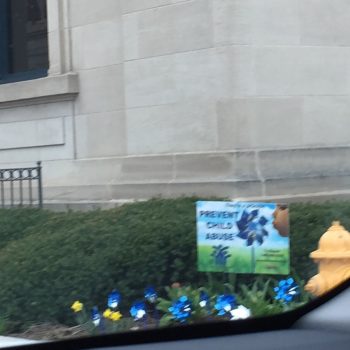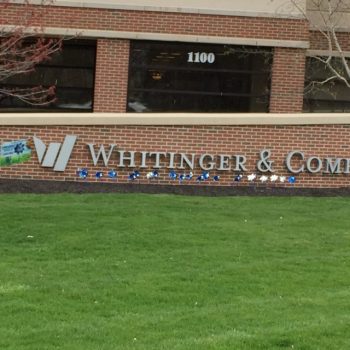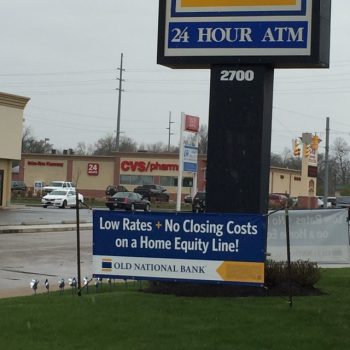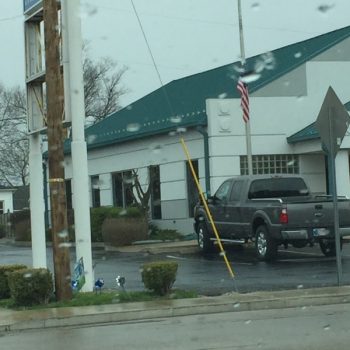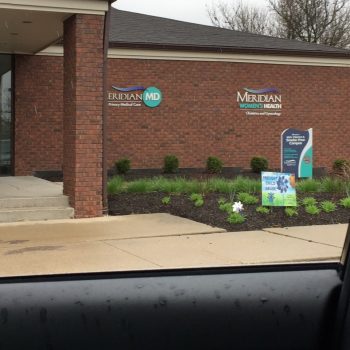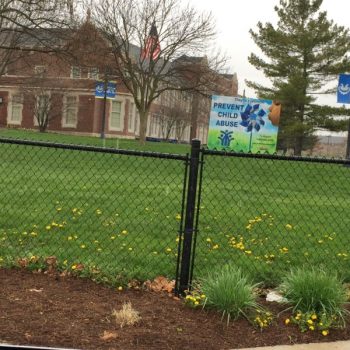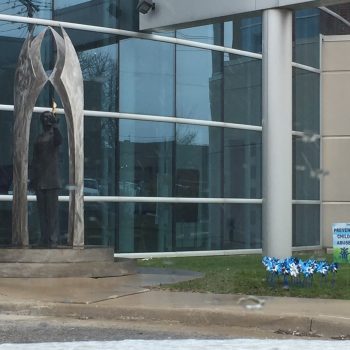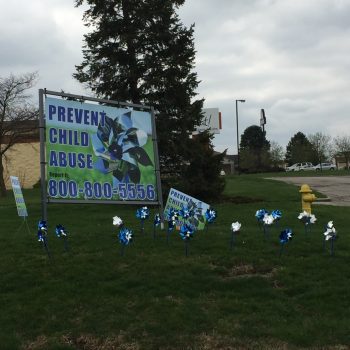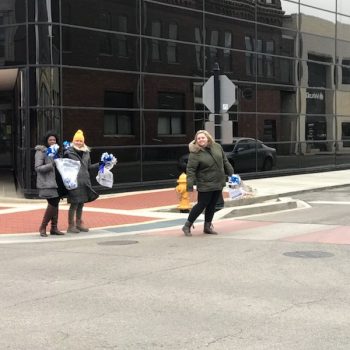The pinwheel represents Prevent Child Abuse America’s efforts to change the way our nation thinks about prevention, focusing on community activities and public policies that prioritize prevention right from the start to make sure child abuse and neglect never occur.
PINWHEELS FOR PREVENTION
What the Pinwheel Represents
In 2008, Prevent Child Abuse America introduced the pinwheel as the new national symbol for child abuse prevention through Pinwheels for Prevention®. What their research showed, and what our experiences since then have borne out, is that people respond to the pinwheel. By its very nature, the pinwheel connotes whimsy and childlike notions. In essence, it has come to serve as the physical embodiment, or reminder, of the great childhoods we want for all children.
DOWNLOAD
Download our guide, “PREVENTION & REPORTING: Roles and Responsibilities”, to help stop the cycle of child abuse in Delaware County.
You can help us make a difference in the lives of children by supporting Delaware County Prevent Child Abuse Indiana.
Child abuse and neglect is actually preventable. No, we can’t do everything. But each of us can do something. And when we work together, we can do a lot. We can prevent it because kids can’t wait. We can keep kids safe.
Would you like to join us in our efforts to make Delaware County a place where all kids can flourish, free from abuse and neglect?
OUR CORE VALUES
RECOGNIZING ABUSE AND NEGLECT
Chronic failure to meet basic needs of a child for food, clothing, shelter, medical care, education or supervision.
Possible Physical Indicators:
- Flat, bald spots on infant’s head
- Dirty, smelly, torn, dirty or inappropriate clothing for the weather
- Developmental lags
- Underweight
Potential Behavioral Indicators:
- Listless
- Begging/stealing food
- Constant fatigue
- Alcohol or drug use
- Reports being left alone
Behavioral Indicators of Caretaker:
Substance abuser, chaotic life style, apathetic, expects too much of child.
Infliction of physical injury or allowing another to do so.
Possible Physical Indicators:
- Unexplained bruises, especially on “fleshy” areas
- Unexplained welts
- Unexplained burns
- Unexplained lumps
- Unexplained bumps
- Unexplained fractures
- Unexplained lacerations or abrasions
- Hemorrhages
- Burns by cigarettes
- Burns by immersion
- Dental/oral injuries
Potential Behavioral Indicators:
- Verbally reports abuse
- Too eager to please
- Depression
- Low self-esteem
- Behavioral extremes
- Role reversal
- Developmental lags
- Appears frightened of caretaker
- Apprehensive children cry
- Exaggerated startle response
- School absenteeism
Behavioral Indicators of Caretaker:
Harsh disciplinarian, describes child in a consistently negative manner, defensive, conceals or misleads about child’s injuries, substance abuser.
Sexual Abuse: Utilization of a child for sexual gratification by an adult or older child in a position of power, or permitting another person to do so.
Possible Physical Indicators:
- Any venereal disease
- Bruised/dilated genitals or rectum
- Pregnancy under 16 years of age
- Difficulty/pain in walking or sitting
- Foreign matter in bladder, rectum or urethra
- Pelvic inflammatory disease
- Torn, stained or bloody underclothing
- Recurrent urinary tract infections
Potential Behavioral Indicators:
- Aggressive, overt sexual behavior
- Drawing pictures of people with genitals or vagina
- Cruelty to animals without physiological basis
- Pre-mature knowledge of explicit sexual acts
- Sleep disorders
- Taking frequent baths
- Starting fires
- Self-inflicted injuries
- Expresses fear of a particular person or place
- Reports sexual abuse
Behavioral Indicators of Caretaker:
Extremely protective of family privacy, does not allow child to be involved in extra-curricular activities, does not want child to engage in developmentally appropriate activities i.e. dating, encourages child into prostitution, substance abuser.
Non-contact sexual offenses:
- Indecent exposure/exhibitionism
- Exposing children to pornographic material
- Deliberately exposing a child to the act of sexual intercourse
- Masturbation in front of a child
Touching sexual offenses include:
- Fondling
- Making a child touch an individual’s sexual organs
- Any penetration of a child’s vagina or anus – no matter how slight by a penis or any object that does not have a valid medical purpose
Sexual exploitation of a child is also an offense and can include:
- engaging or soliciting a child for the purposes of prostitution
- using a child to film, photograph or model pornography
What are long-term effects of child sexual abuse?
Child sexual abuse may have lifelong effects on children resulting in serious emotional problems including depression, anti-social behavior and identity confusion. Children may lose trust in adults in their lives, suffer feelings of guilt or develop self-abusive behaviors. The memories of abuse may even be suppressed until later in their adult lives.
What can we do to protect children?
Parents can help to protect their children by teaching them that they can say “no” to a person who touches them in a way that makes them uncomfortable. Parents can make sure that their children know that they can report inappropriate behavior to them or another trusted adult and that they will be believed. Promptly reporting suspected abuse of any child is important.
Professionals should be aware of the physical and behavioral indicators of abuse. Many professionals have the opportunity to be positive role models for parents and caregivers. In addition, professionals can encourage victims of abuse to seek support groups and therapy.
Parents need to become educated around Protective Factors. It is an adult’s responsibility to protect a child. You can learn more by going to www.d2l.org
Emotional Neglect – Chronic failure by the caretaker to provide support and affection necessary to develop a sound and healthy personality. When a child is emotionally neglected, he or she is being hurt by what is not there.
Potential Behavioral Indicators:
- Low self esteem
- Difficulty forming positive relationships
- Eating disorders
- Elimination problems
- Speech disorders
- Inability to trust
- Sleep problems
- Sadistic, masochistic
- Apathetic
- Suicidal
- Withdrawal
- Anxiety, fear
- Developmental lags
- Reports emotional maltreatment
Behavioral Indicators of Caretaker:
Rejecting, ignoring, terrorizing, isolating, corrupting
Emotional neglect may include:
- Habitual lack of attention, affection, emotional support or supervision
- Refusal of treatment or services recommended by school or medical personnel
- Punishing indiscriminately without teaching right from wrong
- No “family time” for shared social experiences such as meals, discussions about feelings or family outings
- Showing no interest in a child’s schoolwork, grades, hobbies or friends
- Lack of supervision with no established expectations for behavior
Emotional abuse is a chronic attitude or act of a caretaker that is detrimental to the child’s development of a sound and healthy personality. Emotional abuse is often expressed in verbal abuse, making a child feel that he or she is worthless and unworthy of attention and love.
Emotional abuse may include:
- Verbal threats of bodily harm
- Mis-socialization of a child into harmful behaviors such as lying or stealing
- Demeaning a child with comments such as “you’re stupid,” “you’re no good,” “you’re ugly,” or “I hate you”
Effects of Emotional Maltreatment
- Low self esteem
- Difficulty in forming positive relationships
- Defiant behavior
- Inability to trust
- Poorly developed ability to empathize with others
- Apathy
- Elimination disorders
- Speech disorders
- Eating disorders
- Derives pleasure from hurting others
- Suicide attempts
What Can We Do To Prevent Emotional Maltreatment?
Teach parents and caregivers to set limits, communicate directions and provide structure for children and youth with loving, rather than hurting, words.
Tell children and youth that they are special, important, lovable, likeable and talented.
Provide support and education to parents and caregivers who are adult supervisors of maltreatment to help break the cycle of abuse.
Medical neglect: even minimal health care is not being obtained for a child. This lack of health care can lead to serious harm and even death. For example, an untreated cold or flu can result in pneumonia, which can be fatal.
Signs of medical neglect include:
- Adult does not use emergency services at all, even with severe injury or illness
- When medicine is prescribed, the prescription is not filled
- Dental needs go untreated
- Regimens recommended for treatment of chronic illness not followed
- Prescribed psychological help not obtain
Failure to thrive: Failure to thrive is a significantly underweight child, usually less than 18-months-old. Any child suffering from failure to thrive should be reported as a potential victim of neglect. Approximately 30 percent of failure to thrive cases have an organic cause and require the adult to seek medical attention for the child.
Warning signs include:
- Prominent ribs
- Thin buttocks
- Much wrinkled skin
- Spindly arms and legs
If you suspect a child is suffering from medical neglect, contact Indiana Department of Child Services. If you have questions about the health of your or any other child, contact your local health care provider, or visit the links below:
American Academy of Pediatrics provides expertise and tips for child safety and health
Indiana Family Helpline: 1.800.433.0746 is staffed Monday through Friday, 7:30 a.m. to 5:00 p.m. and has an answering machine at all other times. Staffed by the Department of Health, they will help you locate and receive information on a range of health questions
Sources: “Child Maltreatment: A Clinical Guide and Reference,” A.E. Brodeur & J.A. Monteleone; “Field Guide to Child Welfare,” Judith Rycus & Ronald Hughes; Child Welfare Information Gateway
Commercial Sexual Exploitation of Children (CSEC) is the recruitment, harboring, transportation, provision, or obtaining of a person for the purposes of a commercial sex act, in which the commercial sex act is induced by force, fraud, or coercion, or in which the person induced to perform such an act has not attained 18 years of age.
Warning signs that an individual is being trafficked:
- Signs of physical abuse such as burn marks, bruises or cuts
- Unexplained absences from class
- Running away from home/placement
- Less appropriately dressed than before
- Sexualized behavior
- Overly tired in class
- Withdrawn, depressed, distracted or checked out
- Brags about making or having lots of money
- Displays expensive clothes, accessories or shoes
- New tattoo (tattoos are often used by pimps as a way to brand victims. Tattoos of a name, symbol of money or barcode could indicate trafficking)
- Shows signs of gang affiliation? (ie: a preference for specific colors, notebook doodles of gang symbols, etc.)
If you suspect a person is being trafficked call the National Human Trafficking Resource Center (NHTRC): 1-888-3737-888
Children abused in Indiana each year
Neglected
Physical Abuse
Sexual Abuse
CONTACT US
We do not take abuse/neglect report calls!
Please report all suspected child abuse or neglect to Indiana Department of Child Services by calling 1-800-800-5556. They operate this 24-hour, 7-day a week hotline. There is also a local number for every county listed at the Indiana Department of Child Services website: http://www.in.gov/dcs/2372.htm
100 W Main St
Muncie, Indiana
3rd floor



